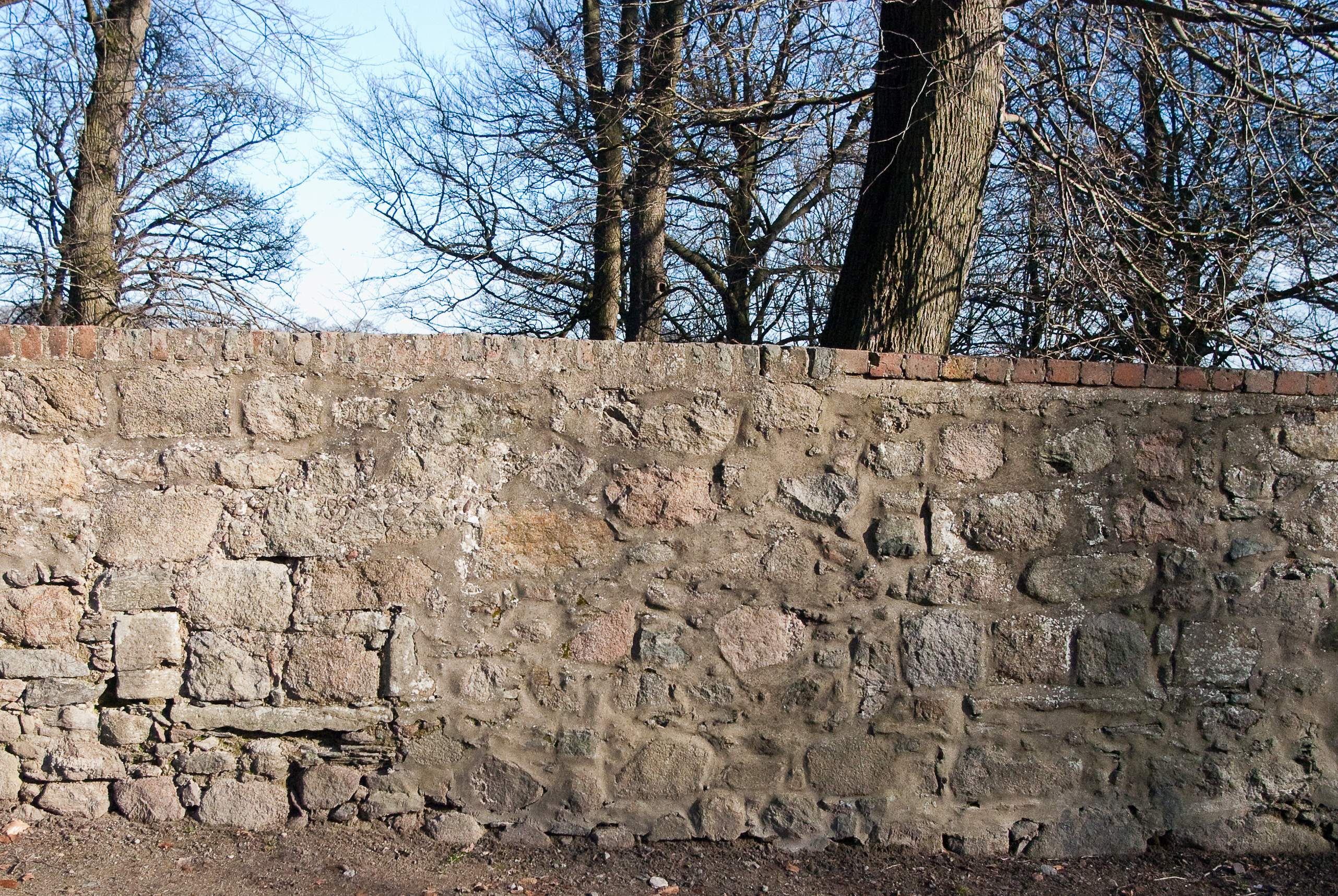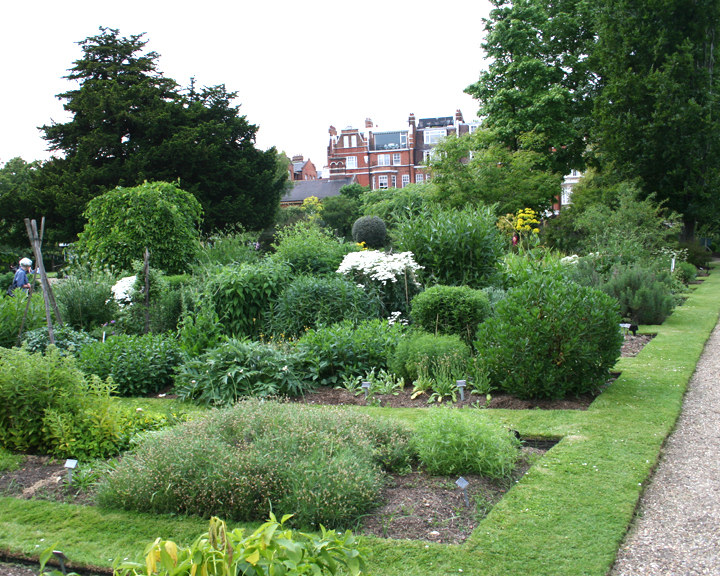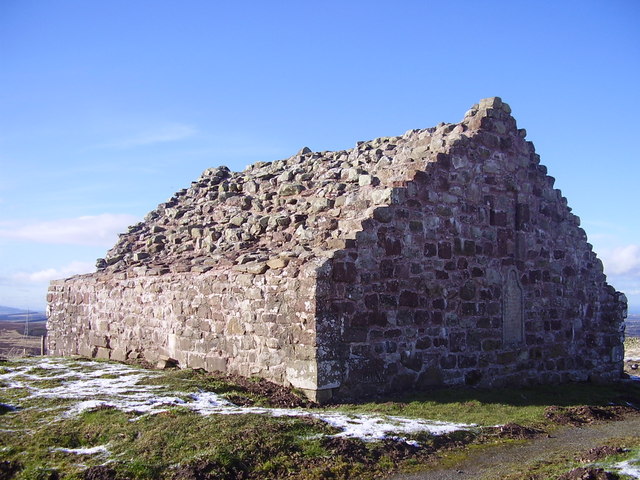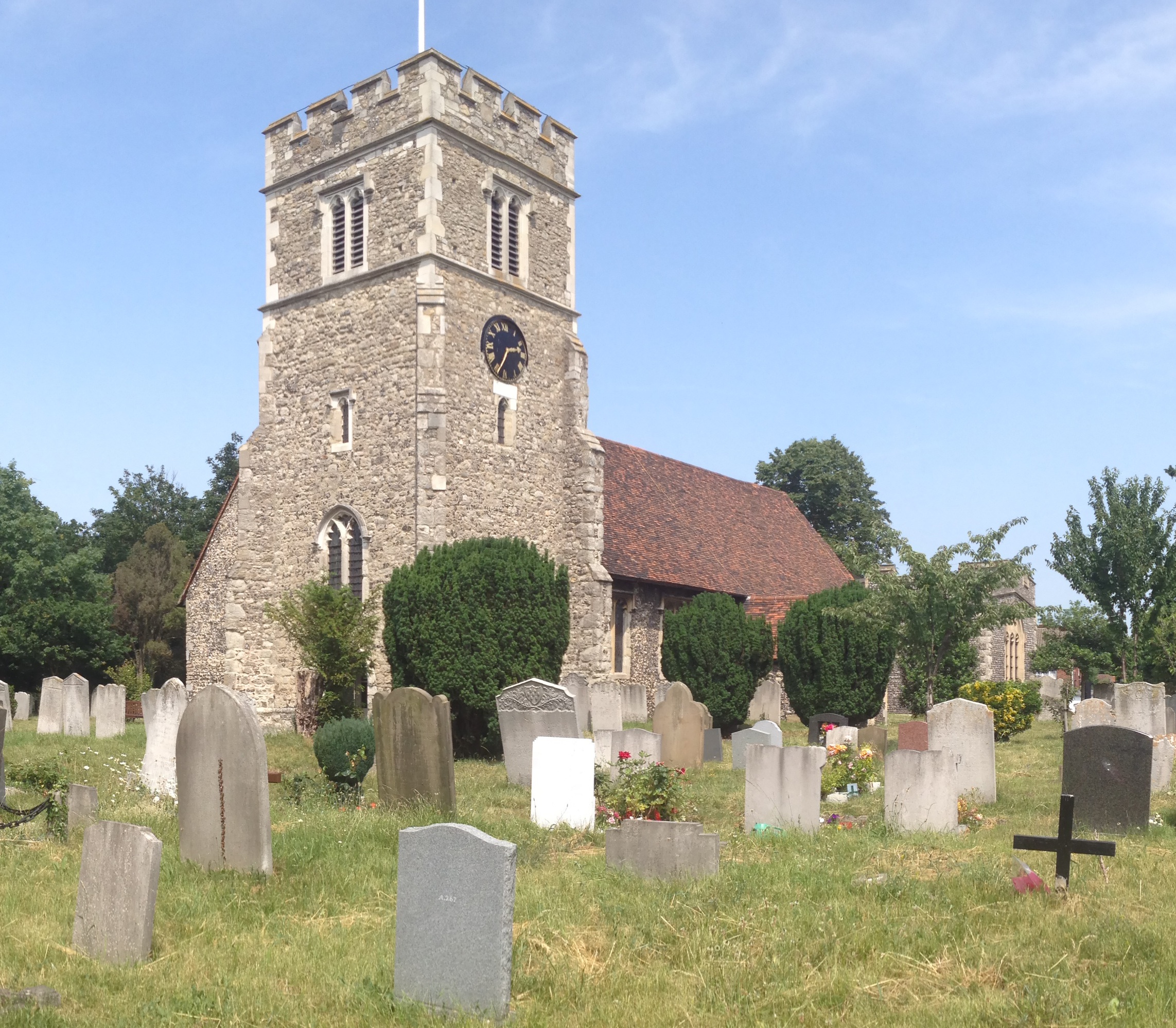|
Bishop Dunbar's Hospital
Bishop Dunbar's Hospital was founded in 1531 by Bishop Gavin Dunbar, the Elder. The hospital was endowed by a mortification just before his death. Dunbar petitioned the King, James V of Scotland, and the charter, signed on 24 February 1531 records the King’s approval that ‘ unbar shall... ''found an hospital near the cathedral church, but outside the cemetery''...’ It was also known as St Mary's Hospital. In the mortification, Dunbar's charitable purpose is recorded. Bedesmen were supported by a charitable foundation that emerged from the original church control until the twenty-first century. Bedesmen drew their name from the word "bede" - a prayer. The residents of Dunbar's Hospital said prayers in a cycle of Divine Office. The Bede House, Old Aberdeen was used by the Bedesmen from the hospital from 1789 to the end of the nineteenth century. The only remains of the 1531 building can be seen in a perimeter wall for Seaton Park in Old Aberdeen. The last Bedesman died in 198 ... [...More Info...] [...Related Items...] OR: [Wikipedia] [Google] [Baidu] |
St Machar's Cathedral
St Machar's Cathedral usually called Old Machar (Scottish Gaelic: Cathair-eaglais Naomh Machar), (or, more formally, the Cathedral Church of St Machar) is a Church of Scotland church in Aberdeen, Scotland. It is located to the north of the city centre, in the former burgh of Old Aberdeen. Technically, St Machar's is no longer a cathedral but rather a high kirk, as it has not been the seat of a bishop of the Catholic Church in Scotland or the Scottish Episcopal Church since 1690. History St Machar is said to have been a companion of St Columba on his journey to Iona. A fourteenth-century legend tells how God (or St Columba) told Machar to establish a church where a river bends into the shape of a bishop's crosier before flowing into the sea. The River Don bends in this way just below where the cathedral now stands. According to legend, St Machar founded a site of worship in Old Aberdeen in about 580. Machar's church was superseded by a Norman cathedral in 1131, sho ... [...More Info...] [...Related Items...] OR: [Wikipedia] [Google] [Baidu] |
Dunbar Hospital Per Executores
Dunbar () is a town on the North Sea coast in East Lothian in the south-east of Scotland, approximately east of Edinburgh and from the English border north of Berwick-upon-Tweed. Dunbar is a former royal burgh, and gave its name to an ecclesiastical and civil parish. The parish extends around east to west and is deep at its greatest extent, or , and contains the villages of West Barns, Belhaven, and East Barns (abandoned) and several hamlets and farms. The town is served by Dunbar railway station with links to Edinburgh and the rest of Scotland, as well as London and stations along the north-east England corridor. Dunbar has a harbour dating from 1574 and is home to the Dunbar Lifeboat Station, the second-oldest RNLI station in Scotland. Dunbar is the birthplace of the explorer, naturalist, and influential conservationist John Muir. The house in which Muir was born is located on the High Street, and has been converted into a museum. There is also a commemorative s ... [...More Info...] [...Related Items...] OR: [Wikipedia] [Google] [Baidu] |
Infrastructure Completed In 1531
Infrastructure is the set of facilities and systems that serve a country, city, or other area, and encompasses the services and facilities necessary for its economy, households and firms to function. Infrastructure is composed of public and private physical structures such as roads, railways, bridges, tunnels, water supply, sewers, electrical grids, and telecommunications (including Internet connectivity and broadband access). In general, infrastructure has been defined as "the physical components of interrelated systems providing commodities and services essential to enable, sustain, or enhance societal living conditions" and maintain the surrounding environment. Especially in light of the massive societal transformations needed to mitigate and adapt to climate change, contemporary infrastructure conversations frequently focus on sustainable development and green infrastructure. Acknowledging this importance, the international community has created policy focused on susta ... [...More Info...] [...Related Items...] OR: [Wikipedia] [Google] [Baidu] |
Provand's Lordship
The Provand's Lordship of Glasgow, Scotland, is a medieval historic house museum located at the top of Castle Street within sight of the Glasgow Cathedral and Glasgow Royal Infirmary, and next to the St Mungo Museum of Religious Life and Art. History Provand's Lordship was built as part of St Nicholas's Hospital by Andrew Muirhead, Bishop of Glasgow in 1471. A western extension, designed by William Bryson, was completed in 1670. In the early 19th century the house was occupied by a canon supported by income from the Lord of the Prebend (or "Provand") of Barlanark. Later that century it was acquired by the Morton Family who used it as a sweet shop. Following a generous donation Sir William Burrell, in the form of cash as well a collection of seventeenth-century Scottish furniture in the late 1920s, the house was bought by the specially-formed Provand's Lordship Society, whose aim was to protect it. In 1978, the building was acquired by the City of Glasgow who restored it. It ... [...More Info...] [...Related Items...] OR: [Wikipedia] [Google] [Baidu] |
Physic Garden
A physic garden is a type of herb garden with medicinal plants. Botanical gardens developed from them. History Modern botanical gardens were preceded by medieval physic gardens, often monastic gardens, that existed by 800 at least. Gardens of this time included various sections including one for medicinal plants called the or . Pope Nicholas V set aside part of the Vatican grounds in 1447 for a garden of medicinal plants that were used to promote the teaching of botany, and this was a forerunner to the academic botanical gardens at Padua and Pisa established in the 1540s. Certainly the founding of many early botanic gardens was instigated by members of the medical profession. The naturalist William Turner established physic gardens at Cologne, Wells, and Kew; he also wrote to Lord Burleigh recommending that a physic garden be established at Cambridge University with himself at its head. The 1597 ''Herball, or Generall Historie of Plantes'' by herbalist John Gerard was sai ... [...More Info...] [...Related Items...] OR: [Wikipedia] [Google] [Baidu] |
Soutra Aisle
Soutra Aisle, (the present structure lies just within the boundary of the Scottish Borders from Midlothian) not far from Fala, is the remains of the ''House of the Holy Trinity'', a church that was part of a complex comprising a hospital and a friary. It lies half a mile along the B6368 from its junction with the A68. History The complex was founded by Malcolm IV in 1164, when he granted it the lands of Brotherstanes up to and including the lands of Lyndean.Huner, James, FSA (Scot)., ''Fala and Soutra, including a History of the Ancient "Domus de Soltre"'', Edinburgh, 1892: 31-2 It was built close to the Via Regia, the main route from the North to the Borders Abbeys; it was known as the House of the Holy Trinity and was run by an Augustinian Order. The Great Seal of Scotland mentions Thomas Lauder (later Bishop of Dunkeld) as Master of the Hospital of Soutra on 26 February 1439 (no. 226) and 20 May 1444 (no. 298). A Supplication to Rome dated 7 October 1444 states that he ... [...More Info...] [...Related Items...] OR: [Wikipedia] [Google] [Baidu] |
Hospital Of St John The Baptist, Arbroath
The Hospital of St John the Baptist, at Arbroath, Scotland, was founded in the early 14th century by the monastic community at Arbroath Abbey. The exact date for the foundation is uncertain, but it is first recorded in 1325 during the time that Bernard of Kilwinning (1324–c.1328) was Abbot of Arbroath.The 1325 date appears in a document ''Inquisicio facta de domo elimosinaria'', from Reg. Nig. Fol. 59/ Regal.fol. 99. (see ). A further reference is found in a later document, ''Assedatio terrarum de Spedalfeilde facta Reginaldo de Dunbradan et Hugoni Macpessi'', from Regist. Nig. F. 14/ Regist. Regali f 16. (see ). The Abbey itself was founded in 1178 by King William the Lion for a group of Tironensian Benedictine monks from Kelso Abbey. It was consecrated in 1197. It is possible that the hospital was used by travellers, as a chantry or possibly almshouse. The only visible remains of the medieval hospital are a left hand door arch which has been incorporated into the 19th-ce ... [...More Info...] [...Related Items...] OR: [Wikipedia] [Google] [Baidu] |
Hospital Chantry
A hospital chantry is a part of a hospital dedicated to prayer. History During the period 1100 to 1600 the western Latin Church developed a comprehensive theology of charity and what came to be known as Purgatory. In Scotland together with England and Wales, different traditions developed in the provision of care for the elderly, the sick and the dying. In Scotland hospitals provided a number of functions: Travellers’ rest, care homes for elderly men and women; and sub-monastic prayer communities. Hospitals such as Bishop Dunbar’s Hospital in Old Aberdeen were in part prayer communities and in part care homes. Most hospitals or ''maison Dieu'' had a place or room set aside as a chantry chapel, or an oratory. In the Kincardine O’Neil Hospital, the situation on a drove road offered a travellers’ rest as well as a care and prayer community. Cowan et al. provide details of some 165 hospitals that offered all or some of these functions. In England, similar conditions from t ... [...More Info...] [...Related Items...] OR: [Wikipedia] [Google] [Baidu] |
Kincardine O'Neil Hospital, Aberdeenshire
Kincardine O'Neil Hospital was founded in the 13th century in the village of Kincardine O'Neil in Scotland. Almost certainly it served as a traveler's inn and as a hospice for elderly and "poor" men. The hospital was situated adjacent to a bridge over the River Dee and may have been a chantry for the early Bishops of Mortlach (See Bishop of Aberdeen). Remains of a building can be seen abutted to the Auld Parish Church in Kincardine O'Neil. This building may have been a later or second hospital. It is also possible that these ruins may have been part of St Erchard's Church - a.k.a. St Marys' or the Auld Kirk. History There is no certainty with regard to the Hospital or its location. The first reference to a hospital being built comes from the 1233 Charter by Alan the Durward. Confirmatory evidence can be found in 1296 in the Second Ragman Roll. On 28 August 1296 " …Wautier master of the hospital of Kincardine ou Neel …" signed the Roll at Berwick on Tweed. Two possible ... [...More Info...] [...Related Items...] OR: [Wikipedia] [Google] [Baidu] |
Mitchell's Hospital Old Aberdeen
Mitchell's Hospital, Old Aberdeen, in Old Aberdeen, Scotland, was founded by the philanthropist David Mitchell in 1801 as follows: ''" .. from a regard for the inhabitants of the city of Old Aberdeen and its ancient college and a desire in these severe times to provide lodging, maintenance and clothing for a few aged relicks and maiden daughters of decayed gentlemen merchants or trade burgesses of the said city.. "''. See the text of the 1801 Mortification or the conditions of the endowment. The Hospital is owned and managed by the University of Aberdeen, Aberdeen City Council and the Cathedral Church of St Machar in Old Aberdeen. The origins of the Hospital are due to various attempts by the Incorporated Trades and Merchants in Old Aberdeen to provide a "care home" for their elderly and infirm members and their "relicks". From 1801 until the beginning of the twentieth century, the hospital served as a refuge for "relicks" of Old Aberdeen Trade Burgesses. Mitchell's mortificat ... [...More Info...] [...Related Items...] OR: [Wikipedia] [Google] [Baidu] |
Beggar's Badge
Beggars' badges were badges and other identifying insignia worn by beggars beginning in the early fifteenth century in Great Britain and Ireland. They served two purposes; to identify individual beggars, and to allow beggars to move freely from place to place. Origins It was not until the introduction of poor laws across the nations of Great Britain and Ireland that the “problem” of the poor was properly addressed. In England and Scotland, from the time of the old poor laws in Elizabethan era, Elizabethan times, some form of safety net was provided for the destitute. The Victorian era, Victorian poor laws set in place the basis for modern social care. In addition to unclassified poor, there were bedesmen. Bedesmen were elderly men and in some cases women, who were cared for by the church of England, Church or civic authorities. Bedesmen were housed in hospitals from the early twelfth century. Cowan and Easson provide the most comprehensive account of medieval hospitals. Man ... [...More Info...] [...Related Items...] OR: [Wikipedia] [Google] [Baidu] |
Dunbar Hospital Hutton
Dunbar () is a town on the North Sea coast in East Lothian in the south-east of Scotland, approximately east of Edinburgh and from the English border north of Berwick-upon-Tweed. Dunbar is a former royal burgh, and gave its name to an ecclesiastical and civil parish. The parish extends around east to west and is deep at its greatest extent, or , and contains the villages of West Barns, Belhaven, and East Barns (abandoned) and several hamlets and farms. The town is served by Dunbar railway station with links to Edinburgh and the rest of Scotland, as well as London and stations along the north-east England corridor. Dunbar has a harbour dating from 1574 and is home to the Dunbar Lifeboat Station, the second-oldest RNLI station in Scotland. Dunbar is the birthplace of the explorer, naturalist, and influential conservationist John Muir. The house in which Muir was born is located on the High Street, and has been converted into a museum. There is also a commemorative s ... [...More Info...] [...Related Items...] OR: [Wikipedia] [Google] [Baidu] |











